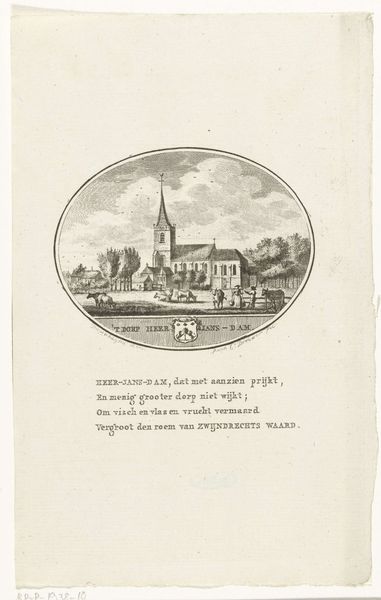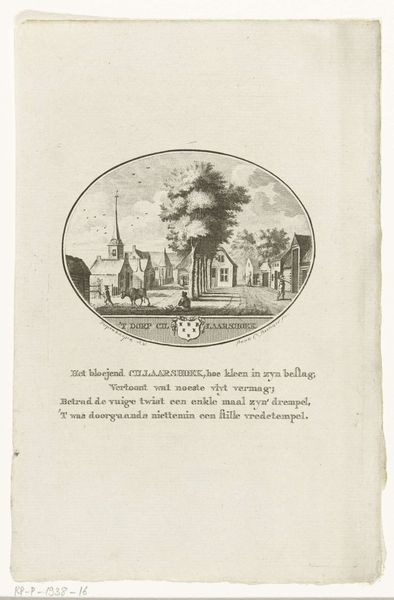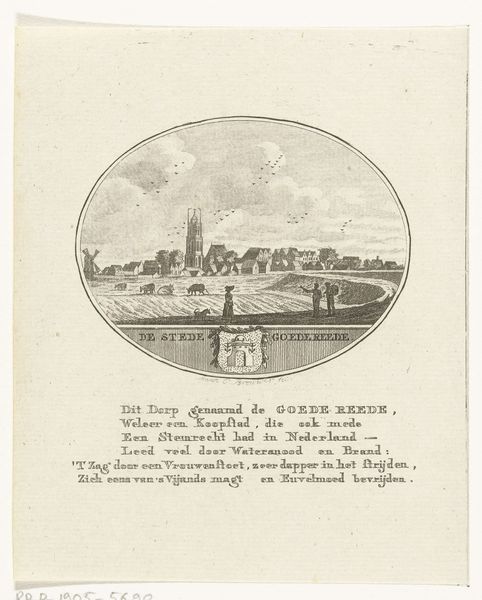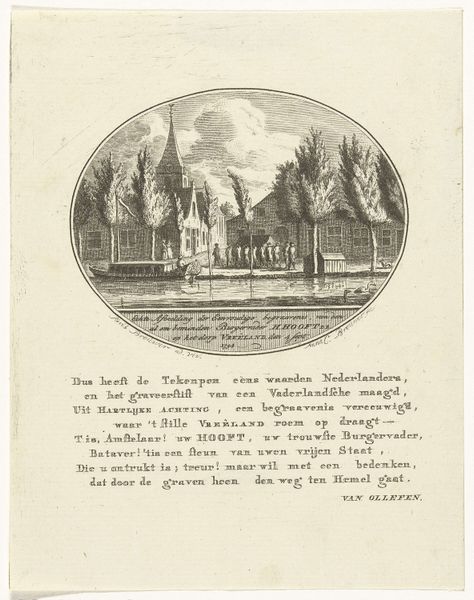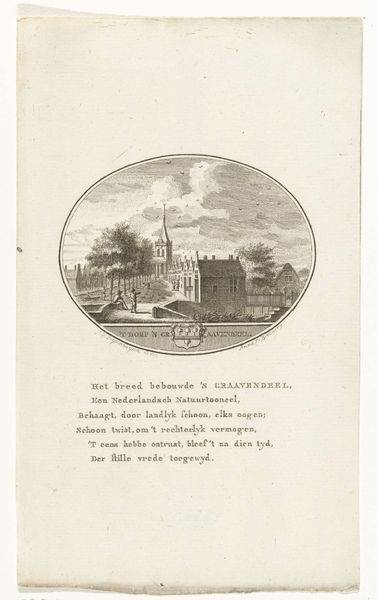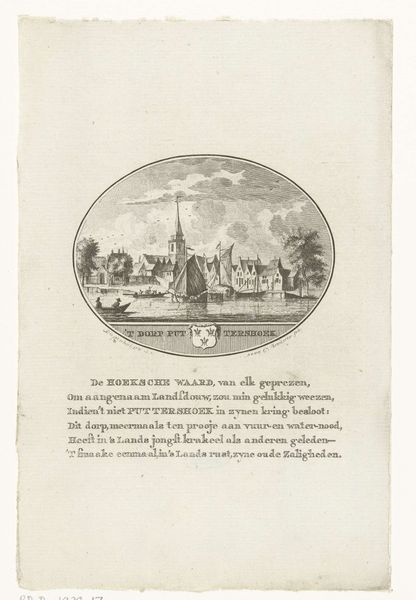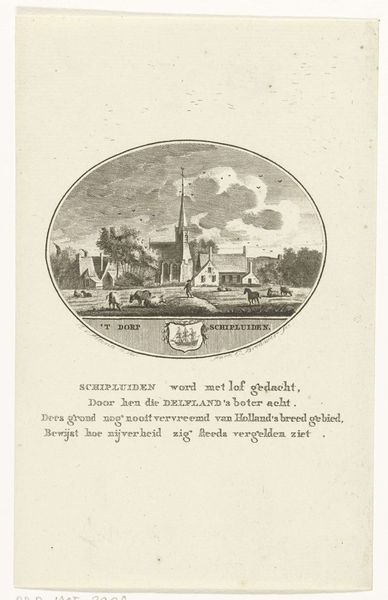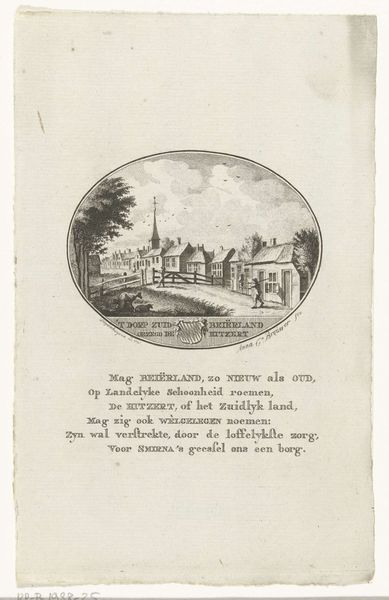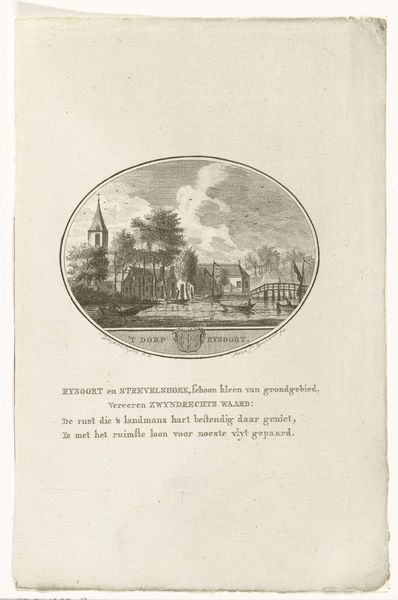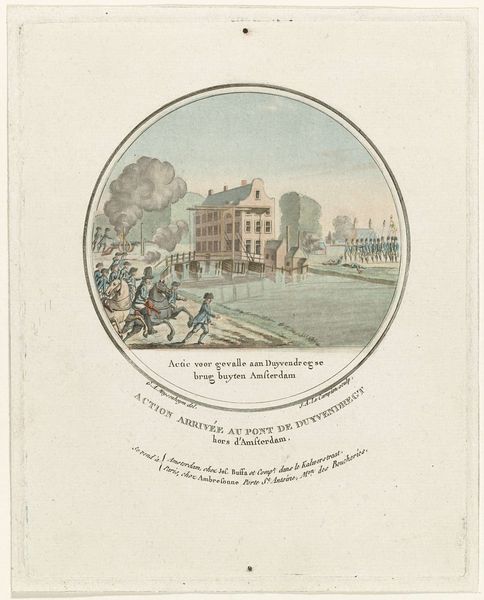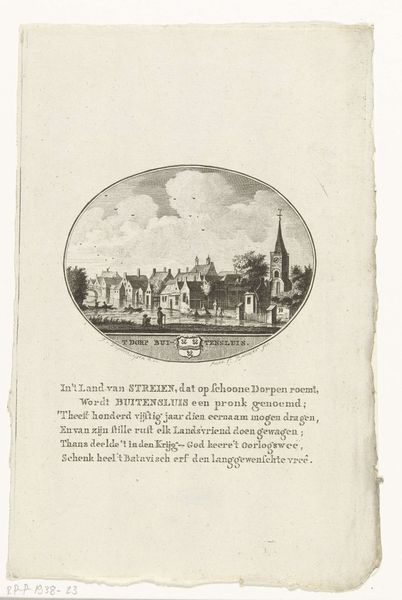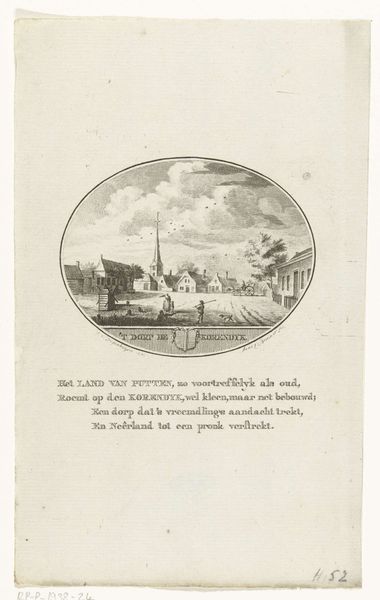
print, engraving
#
dutch-golden-age
# print
#
old engraving style
#
landscape
#
cityscape
#
engraving
Dimensions: height 220 mm, width 140 mm
Copyright: Rijks Museum: Open Domain
Curator: Welcome. We're standing before "Gezicht op het dorp Zwijndrecht," or "View of the Village of Zwijndrecht." This engraving, dating from between 1791 and 1793, comes to us from the hand of Anna Catharina Brouwer, and it's held here at the Rijksmuseum. Editor: My first impression is of its charming simplicity. The fine lines create a sense of tranquility and order; it’s a beautifully balanced composition, contained within this oval shape, focusing the eye. Curator: Indeed. Brouwer produced this engraving in a period rife with social and political tension, especially in the Dutch Republic. Cityscapes like this often served not just as depictions, but also as statements about local pride and perhaps even veiled political commentary during times of upheaval. Editor: The technique of engraving allows for incredible detail, doesn't it? Look at the textures of the buildings and the reflections in the water, rendered through nothing but tiny, precise lines. The symmetry in the composition, bisected by the waterline and echoed in the clouds above, adds to its calming effect. Curator: Absolutely. These depictions became popular during the era, becoming both records and promotional tools. They celebrated the Dutch countryside. The almost stylized rendering may speak to an intentional simplification. We must also recall that such pieces would often circulate among specific social circles, perhaps reinforcing existing hierarchies and notions of regional identity. Editor: I agree, the idealized representation removes the potential chaos and grit of daily life in favor of harmony. There’s an emphasis on structure that can't be missed, even when we lack context on what it tries to hide. It all seems quite contained and orderly; the buildings, water, and sky each have their respective visual space. Curator: Ultimately, I view this engraving as a valuable window into a specific moment, showing us not just what Zwijndrecht looked like but also what its inhabitants, and perhaps the ruling elite, wanted it to represent. Editor: For me, the pure formality and skillful artistry allows a pause. It brings attention to simple subjects in a beautiful way.
Comments
No comments
Be the first to comment and join the conversation on the ultimate creative platform.
